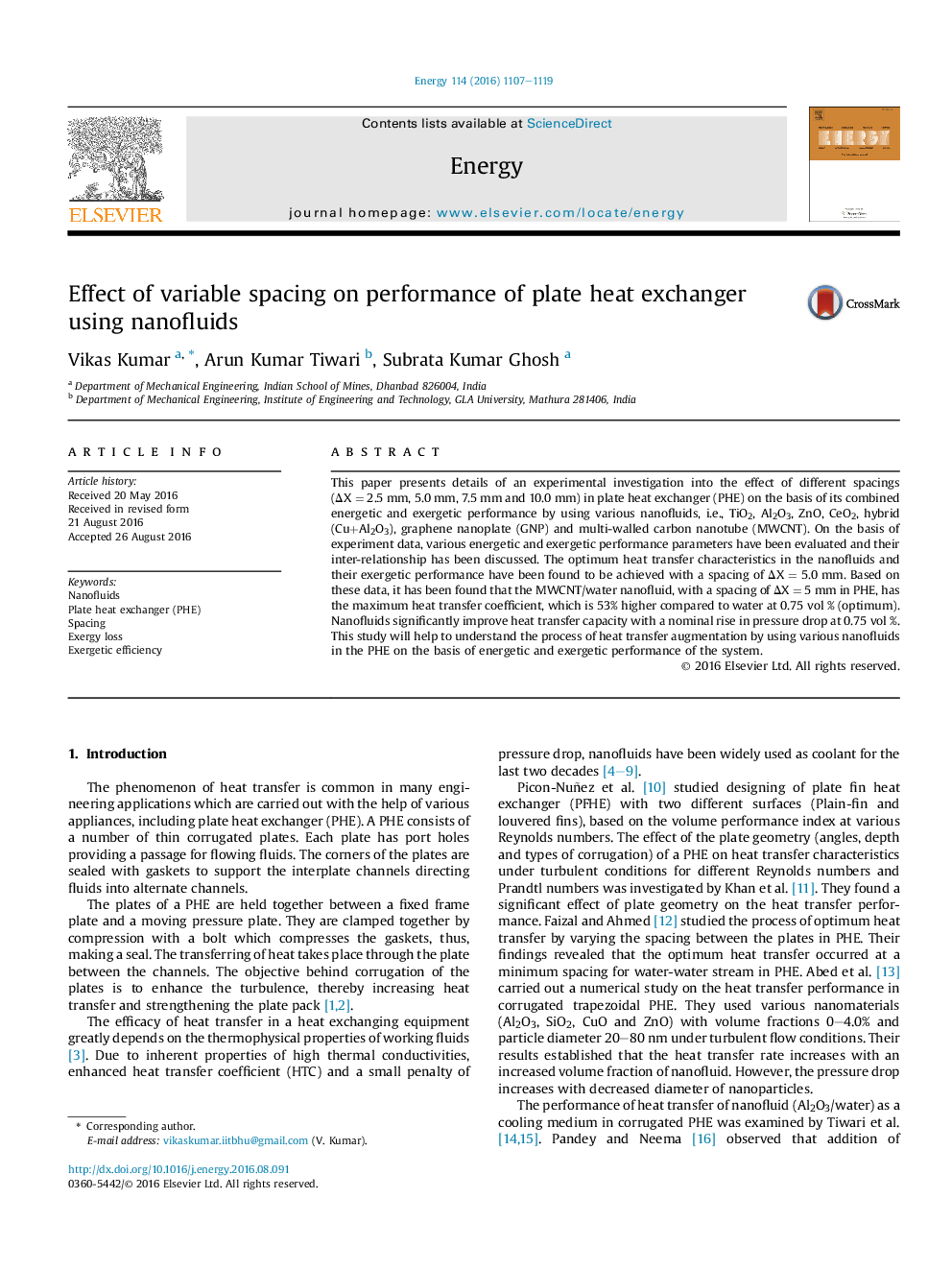| Article ID | Journal | Published Year | Pages | File Type |
|---|---|---|---|---|
| 8072912 | Energy | 2016 | 13 Pages |
Abstract
This paper presents details of an experimental investigation into the effect of different spacings (ÎXÂ =Â 2.5Â mm, 5.0Â mm, 7.5Â mm and 10.0Â mm) in plate heat exchanger (PHE) on the basis of its combined energetic and exergetic performance by using various nanofluids, i.e., TiO2, Al2O3, ZnO, CeO2, hybrid (Cu+Al2O3), graphene nanoplate (GNP) and multi-walled carbon nanotube (MWCNT). On the basis of experiment data, various energetic and exergetic performance parameters have been evaluated and their inter-relationship has been discussed. The optimum heat transfer characteristics in the nanofluids and their exergetic performance have been found to be achieved with a spacing of ÎXÂ =Â 5.0Â mm. Based on these data, it has been found that the MWCNT/water nanofluid, with a spacing of ÎXÂ =Â 5Â mm in PHE, has the maximum heat transfer coefficient, which is 53% higher compared to water at 0.75Â vol % (optimum). Nanofluids significantly improve heat transfer capacity with a nominal rise in pressure drop at 0.75Â vol %. This study will help to understand the process of heat transfer augmentation by using various nanofluids in the PHE on the basis of energetic and exergetic performance of the system.
Related Topics
Physical Sciences and Engineering
Energy
Energy (General)
Authors
Vikas Kumar, Arun Kumar Tiwari, Subrata Kumar Ghosh,
